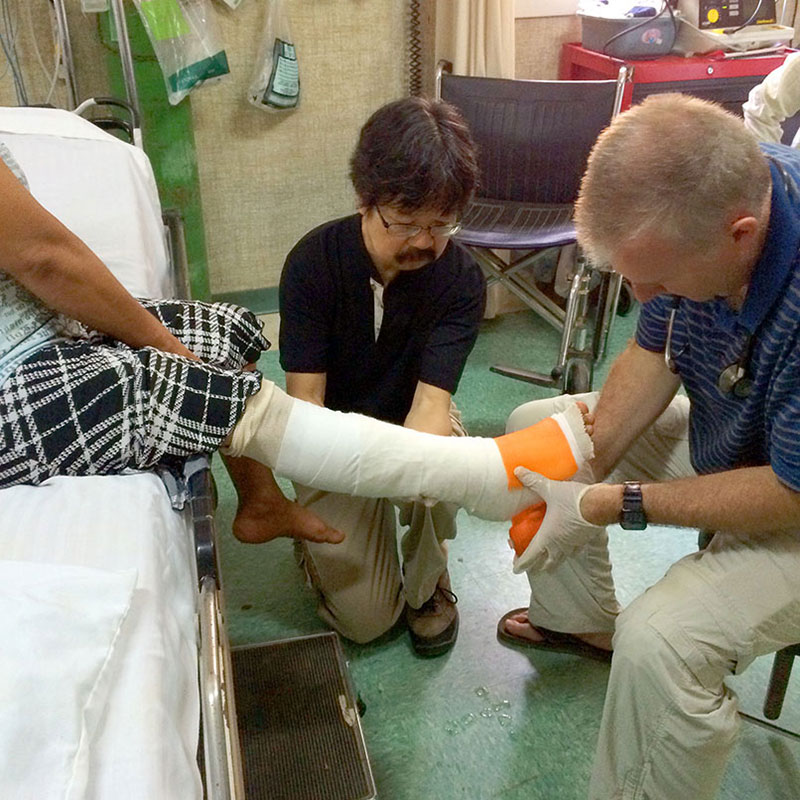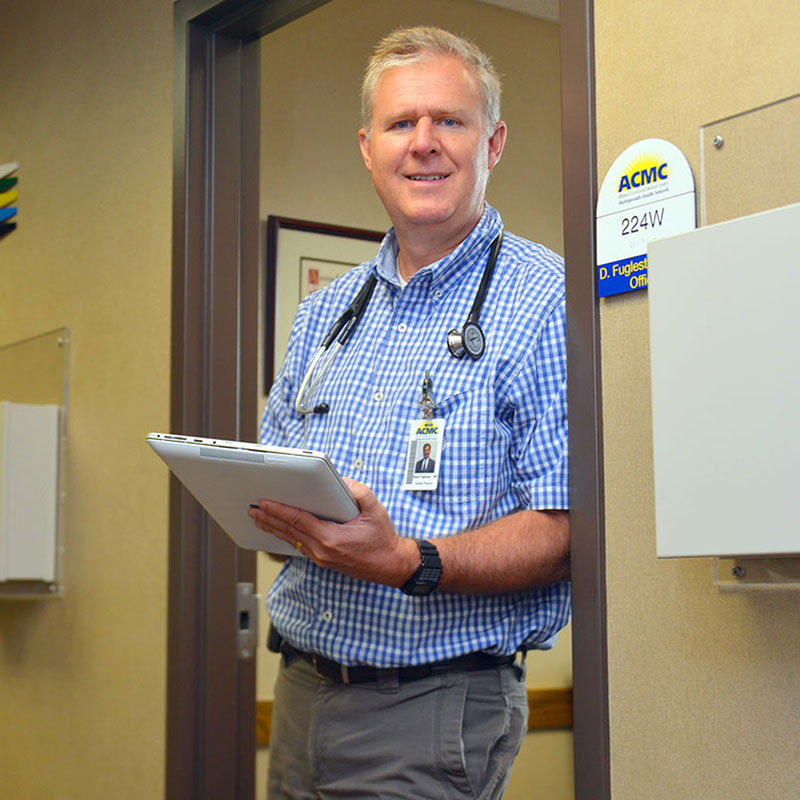Family Medicine Physician Dr. Daniel Fuglestad on His Medical Missions
Family medicine physician Dr. Daniel Fuglestad has done his fair share of traveling. He’s been to Costa Rica, Honduras, Mexico and Guatemala. But his trips aren’t the typical exotic getaway. They’re mission trips. In the past 14 years, he and his family have gone on eight mission trips.
“Missionary work runs in my family. Growing up we lived in East Africa and New Guinea, where my dad was a medical missionary,” said Dr. Fuglestad. “My brothers continue doing missionary work overseas, and my daughter, Anna, has also developed an interest in missionary work. She’s becoming a doctor and would love to serve just about anywhere. It wasn’t something we had really planned on doing, but we enjoy being able to give back.”
The Journey to Medical Missions
When he first came to Willmar to practice as a family medicine physician with ACMC in 1993, Dr. Fuglestad didn’t speak much Spanish. But many of his patients were Hispanic, and he saw the need to learn to communicate with them without an interpreter. He asked an ACMC nurse to teach him Spanish, and over the course of two years, Dr. Fuglestad learned what he needed to know to communicate with his patients about their health.
In 2000, Dr. Fuglestad and his family traveled to Costa Rica for an emersion language program. They didn’t take their first mission trip to Mexico until seven years later. They went with a local church mission group, and his interest in being a medical missionary grew from there.
“When we began these mission trips, I wanted to see what it was like where many of my patients were from and why they sought out a better life. I think it gives me a better perspective on how lucky we are to live like we do,” he said. “From a medical standpoint, the resources we have and the quality of care we provide here is leaps and bounds above what people experience in many of these underprivileged areas. It makes you more appreciative of everything you have.”
That’s one of the reasons he keeps going back.
“Many people may not realize this, but many people of Hispanic population in west central Minnesota are from Honduras or Guatemala. That’s what first got me interested in those specific areas,” Dr. Fuglestad said.
Taking Back-to-Back Mission Trips
 This year Dr. Fuglestand and his wife went on two mission trips—one to Honduras and one to Guatemala. Like every mission trip he’s taken, the need in these communities—from the medical side of things as well as the lives these people live—is tremendous.
This year Dr. Fuglestand and his wife went on two mission trips—one to Honduras and one to Guatemala. Like every mission trip he’s taken, the need in these communities—from the medical side of things as well as the lives these people live—is tremendous.“You can’t imagine the things we see. I treated one young man who badly needed to rest his knee so it could heal. But he had to get back to work or he wouldn’t be able to feed his family. For many in these areas, it’s not about living, it’s about surviving,” Dr. Fuglestad said.
Even after returning to Willmar, he continues to think of the people he met on these missions. But in particular, one young patient in Honduras stood out to him.
Dr. Fuglestad and his wife were walking along a gravel road to lunch in the dining hall when they were stopped by a woman in a Land Rover. It was another medical missionary responding to a code blue, which is generally used to indicate a patient requires resuscitation or is in need of immediate medical attention. Dr. Fuglestad jumped in the car and sped off to help a two-year-old boy who was unresponsive. He and his fellow missionaries worked for more than an hour on the boy before deciding to transport him to the main hospital an hour and a half away. It was a harrowing journey across roads filled with deep pot holes and washed out bridges. Dr. Fuglestad and another doctor were working the entire trip to keep the young boy alive. Just outside of the city, the young boy’s condition went from stable to life-threatening. Though they got him to the hospital alive, the next day they’d learned he died.
It’s a heartbreaking story, but unfortunately it’s the reality for many people in the places Dr. Fuglestad has gone for medical missions. Though he realizes he is able to make a difference in the lives of many, Dr. Fuglestad knows there is more that can be done to help these people. So he’ll continue his missionary trips to help though he isn’t sure yet where he’ll go next.
“When I’m in Honduras, I can’t imagine going anywhere else. Then I go to Guatemala, and I can’t imagine being anywhere but there. It’s the people who are really special,” he said. “That’s ultimately why we keep going back. It’s humbling to know you can make a difference for these people. Though I may just be a small part of these people’s lives, they have a special place in my heart.”
